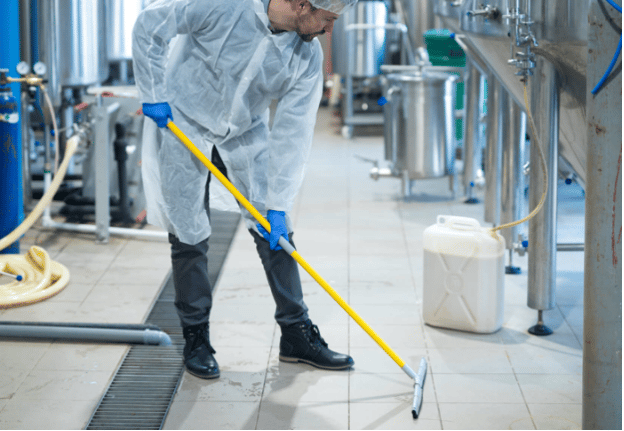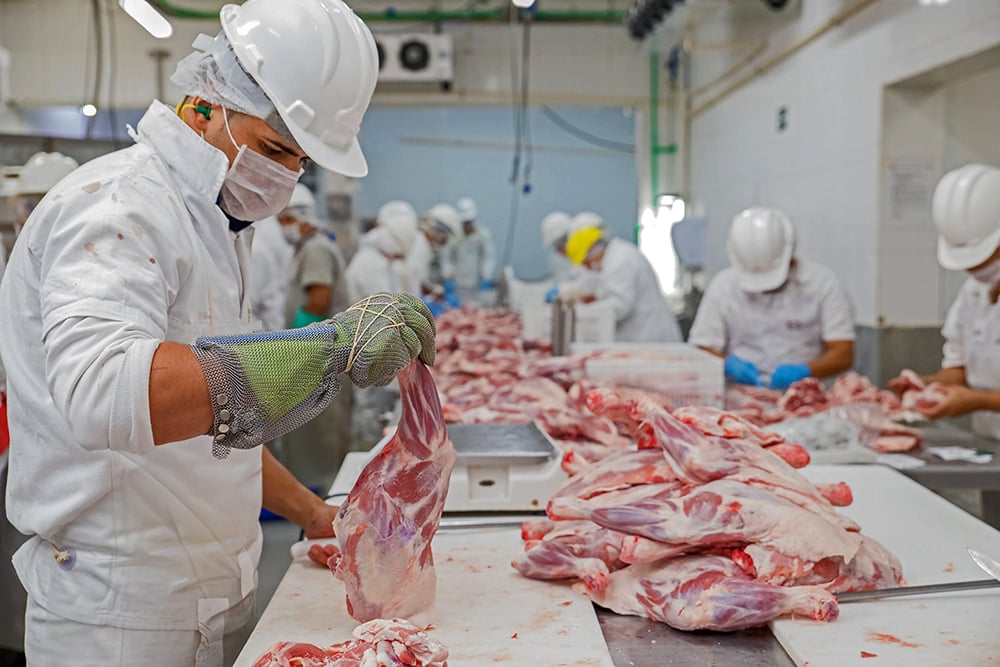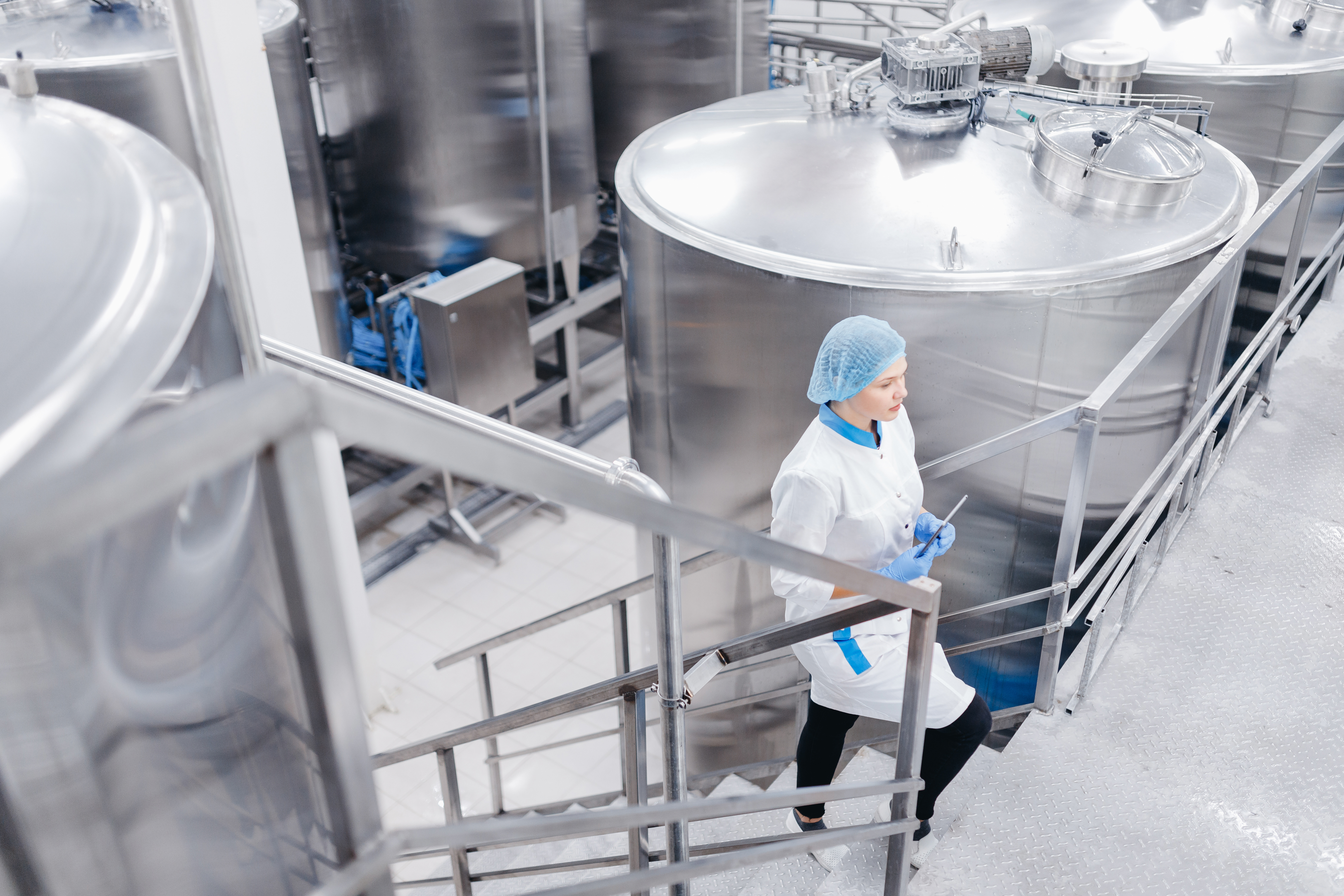Constructing food facilities takes considerable care to ensure a safe, sanitary environment that meets all the legal requirements set out by the FDA and USDA.
It is not just a matter of choosing the right equipment and layout; it is also essential to consider the finishes, like lighting and flooring. Sanitary food processing floors may seem like a small detail, but they play a significant role in reducing the risk of contamination.
Here’s how.
THE IMPORTANCE OF PROPER FLOORING
Flooring materials in sanitary food processing facilities are strictly regulated, so options like wood and tile are not allowed, as they can be porous, allowing water and bacteria to absorb into the surface, leading to mold, mildew, and the risk of contamination.
These flooring materials also offer cracks, which are difficult to clean and offer small cracks and crevices where bacteria can harbor and accumulate.
In most food processing facilities, you will find concrete flooring covered with epoxy or urethane coatings, though methyl methacrylates (MMA) and polyureas are also used.
These coatings are bacteria- and slip-resistant and provide a smooth, crack-free, nonporous surface that is easy to clean and keep sanitary.
FACILITY SETUP

An inefficient facility setup can lead to slower production times and the potential for serious errors, as well as product contamination.
To ensure the proper setup, a facility should flow in the same order as food products are processed: from the raw ingredients to the finished, packaged product. Each area should also have a clear and designated purpose to ensure the most efficient use of space, keeping both workers and products safe.
Where flooring comes into play here is ensuring that you’re using the proper flooring materials depending on the type of traffic in that area. If your production floor will see heavy vehicle traffic of any kind or your employees will need to use wheeled carts to move product around, the flooring and coating you choose should be up to the task.
CLEANING THE FACILITY

Cleanliness should be priority one in all food and beverage processing facilities, as it helps ensure sanitation, reducing the risk of bacteria build-up and contamination.
Your floors are one of the dirtiest areas in your facility, and certainly the dirtiest on your production floor. To maintain sanitary food processing floors, it is critical that the coating is well-maintained and that the floors themselves get cleaned after each workday or during, depending on the type of products you produce.
Ensure that the chemicals you use to clean your floors are compatible with the type of floor coating you’ve chosen and that the tools used to clean them are not going to create pits and scratches where bacteria may harbor.
PULL IT ALL TOGETHER WITH AN EFFICIENT DRAINAGE SYSTEM
.png?width=624&name=pasted%20image%200%20(28).png)
In order to maximize all cleaning procedures and ensure that floor waste is dealt with effectively, a high-quality drainage system is absolutely integral in a food and beverage processing facility. While traditional trench drains have been the norm for many years, the Slot Drain is the superior solution for food facilities.
Slot drains are grate-free slotted trench systems designed to integrate seamlessly with sanitary food processing floors. The 10,000 Series model has no seams or hard corners and is made using nonporous, bacteria-resistant stainless steel, ensuring there is no chance of bacteria sticking to the drain channel.
It is a system designed specifically for industrial food facilities. With a heavy-duty load class rating, FoodSafe Slot Drains are capable of supporting heavy forklift traffic. Slot Drains are designed without metal grates, instead featuring a slot opening as small as 0.5 inches wide and as wide as 1.25 inches. This allows each section of drain to be cleaned in only minutes, instead of having to remove each heavy grate cover and cleaning it as well as the drain channel.
Unlike other systems that require manual cleaning, Slot Drain offers a clean-in-place feature, which makes it possible to plug the drain, add cleaning agents, let it soak, and then easily rinse it clean. This significantly cuts down on cleaning time, allowing workers more time to focus on other tasks.
FoodSafe Drains also offers a Flush-Flo accessory, which connects to a waterline for manual or automatic flushing.
IT ALL STARTS WITH THE FLOORS
Without sanitary floors, a food processing facility cannot function properly — unsanitary conditions can lead to contamination, worker safety issues, and a whole host of other problems.
Ensure that you make the right choices for materials, coatings, and installation, and choose the right sanitary food processing floor drains for the job.
Drainage questions?
To learn more about sanitary FoodSafe Slot Drains, contact one of our drainage experts today, and leave hard-to-clean, unsanitary drainage behind.


